Types of Paint Brushes
![]()
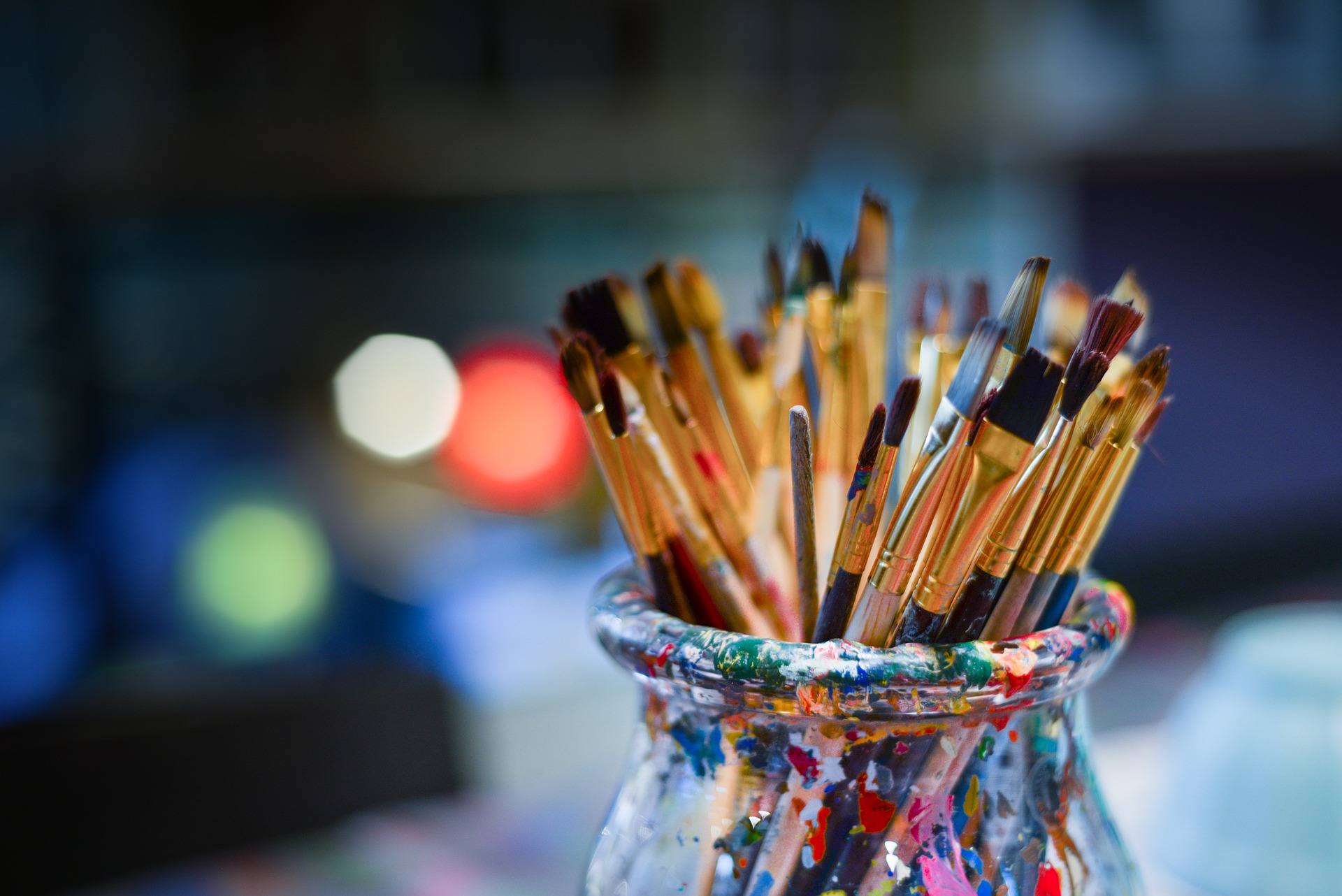
Are you an aspiring artist looking to explore new painting techniques and elevate your skills to the next level? Or are you already a seasoned professional looking to hone your craft? One crucial element of the painting process is selecting the right type of paintbrush to achieve your desired effect. With a variety of brushes available in varying sizes, shapes, and bristle types, figuring out where to start can be overwhelming. But fear not, as our all-inclusive guide covers everything you need to know about choosing the perfect brush for each task, ensuring your artistic vision becomes reality.
Importance of Using the Right Type of PaintBrush
Using the wrong brush can cause your painting project to turn out poorly—with uneven edges or dripping paint, for example. It can also be time-consuming if you have to keep changing brushes throughout your work. Selecting the correct brush type can effectively reduce the time required for a project and ensure a professional and refined appearance. Therefore, it is vital to choose the right brush for each task at hand.
Paint Brush Shapes
Flat Brushes
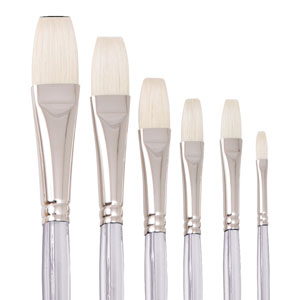
Flat brushes are long and thin with short hairs, making them ideal for wide, sweeping strokes when painting large surfaces. They can also be used to create straight edges without overlapping too thickly, although larger amounts of paint may cause the brush to spread out more.
Pros: Flat brushes provide faster coverage than round brushes when painting large surfaces, are ideal for creating detailed areas such as window sills, and are perfect for glazing techniques that call for a thin layer of paint to be applied over an existing coat.
Cons: Flat brushes are not suitable for softening or bending due to the length of their strokes, can damage delicate surfaces such as mouldings, and require more clean-up than round or fan brushes since they offer less precision.
Round Brushes
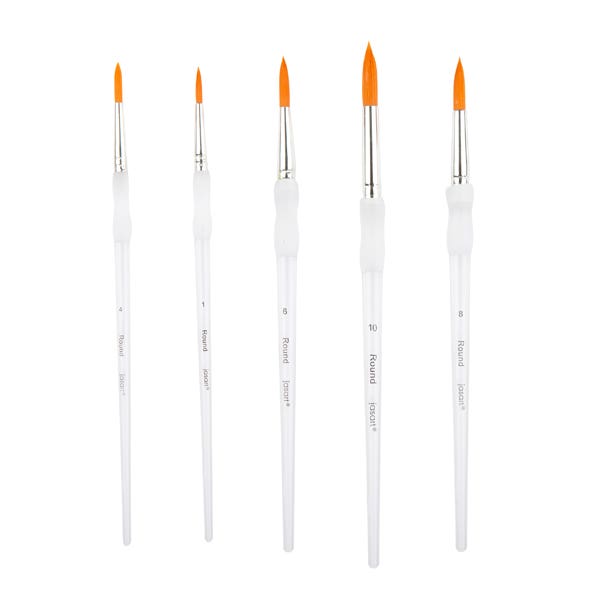
Round brushes feature a natural taper, allowing for precise control when applying liquids and paints. These cylindrical brushes are often made from hog or badger hair and are great for detailed work like painting patterns or letters, as well as covering small objects such as nails and screws without splattering paint on the surrounding area.
Pros: Round brushes are ideal for detailed work, as they provide better precision and hold more liquid than flat brushes. These brushes also allow users to add texture to projects with thicker coats instead of thin layers that would quickly spread across the surface.
Cons: Round brushes are not suitable for large surface areas due to their slower coverage. They also have a higher cost due to the higher quality materials used in the manufacturing process, and poor longevity if not cleaned properly after each use.
Fan Brushes
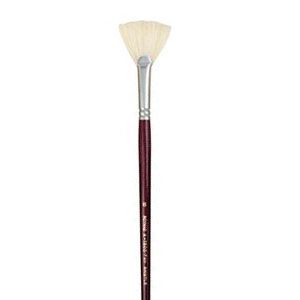
Fan brushes feature flexible hairs tipped in a way to look like feathers, making them great for blending and shading effects. They are usually made from nylon, which is cheaper than other natural fibres, but less durable. For more regular use, high-quality materials such as sable should be chosen instead.
Pros: Fan brushes are perfect for quickly adding wide sweeps across larger surfaces, with great blendability due to their feather-like shape. They are made from nylon fibres, which makes them an affordable option compared to natural fibre varieties.
Cons: Fan brushes are not very precise due to a lack of consistency between individual hairs, making it difficult to create fine details with one stroke. They are not very durable and have poor longevity if not cleaned properly after every use. For these reasons, they should only be used infrequently and under supervision or guidance.
Types of Paint Brushes
Acrylic Brushes

Acrylic brushes have stiffer bristles that prevent dripping and are suitable for use with acrylic paints. They are versatile and can be used for painting murals and creating detailed images. They are easy to clean and maintain, providing longer-lasting performance if properly cared for.
Oil Brushes
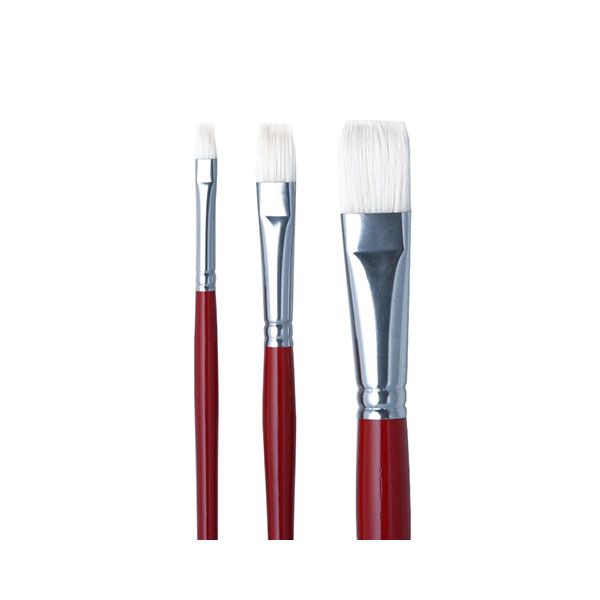
Oil brushes have longer bristles that retain more paint and enable fine details in the artwork. They can create small or large brush strokes, depending on whether you use thinner or thicker paint. Regular cleaning is essential to prevent the bristles from becoming brittle due to the oils used in oil paints.
Watercolour Brushes
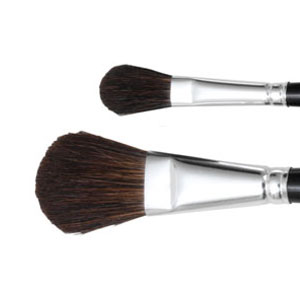
Watercolour brushes are designed for use with water-based paints like watercolours, gouache, and tempera. They have soft bristles that create delicate lines and wash on paper surfaces. These brushes are suitable for creating backgrounds, illustrations, and projects like paper mâché. They require special cleaning to prevent damage to their shape and maintain their performance.
Craft Brushes

Craft brushes are made with synthetic polyester fibres that are easier to clean than natural hair brushes. They are ideal for kids' projects as they're not as soft as natural hair brushes and more suited for broader strokes, like colour blending and shading. However, they're not suitable for intricate details.
Specialty Brushes
Specialty brushes have unique shapes that allow for more creative options in your artwork, such as spatter effects and dry brushing. These brushes require less maintenance as their shape is predetermined, which minimizes damage from handling or cleaning. They provide endless possibilities for any project.
Sable Hair Brushes
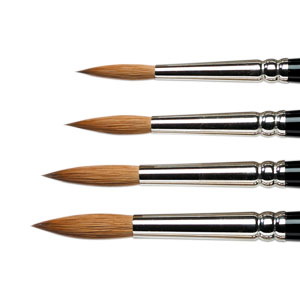
Sable hair brushes have natural hairs that provide exceptional resilience and durability for smooth lines without visible brush strokes. Sable hair brushes require special care for cleaning to maintain their shape, and it is a highly sought-after type of brush due to its exquisite performance. However, they are more delicate than other brushes, so extra care is necessary when handling them.
Filbert Brushes
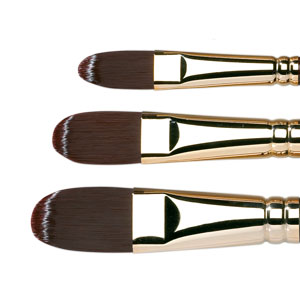
Filbert brushes have flat heads with contoured tips that provide more control over blending colours seamlessly on canvas boards or paper surfaces without leaving unsightly gaps. They are ideal for adding highlights without creating harsh lines between contrasting hues. Cleaning Filbert brushes requires gentle handling to avoid damage to their delicate tips, as natural hairs are not as resilient against frequent manipulation.
Taklon Brushes
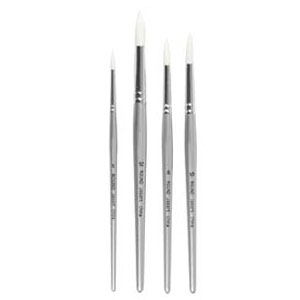
Taklon is a synthetic material that is lightweight, durable, and affordable, making it great for craft products like paintbrushes. It is ideal for painting miniatures or small, detailed pieces and has semi-rigid bristles that allow for precise strokes while being softer than other synthetic materials. Taklon brushes don't require thorough cleaning after each use as dirt particles don't stick easily, saving time when preparing for another project quickly. Ideal for use with acrylic or watercolour paint, taklon brushes are fantastic for all skill levels and a broad variety of strokes and effects.
Brush Sets
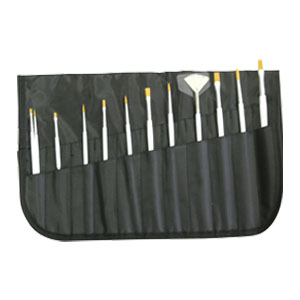
Brush sets are suitable for beginners and contain paint brushes in different shapes, sizes, and materials. They allow you to experiment with various types of brushes before investing in individual ones and come at a lower price. These sets usually include flat, round, and angled brushes along with specialty pieces like fans or filberts to help master different techniques.
Synthetic vs. Natural Bristles: Which Type of Paint Brush is Best?
Natural bristle brushes are often preferred over synthetic ones due to their shape and bend, which provide better control and adhesion when applying paint or liquids. However, they require more care and maintenance than synthetics, as solvents can cause damage over time if not handled properly. Additionally, natural bristles tend to be more expensive, although budget-friendly options are available on the market today. When selecting a brush for any painting task, understanding the differences between natural and synthetic fibres is key.
How to Choose the Right Size of Paint Brush for Your Painting Project
Choosing the right-sized paintbrush for your project is essential for achieving professional-looking results. There are a few factors to consider when deciding which brush size is best for your painting:
- The scale of the project - If you’re working on a large painting, it may be difficult to choose a brush that is too small. Look for brushes that can cover big areas quickly, like a fan brush.
- The detail you want - Smaller brushes allow for more precision, whereas bigger brushes are perfect for broader strokes. Consider how much detail you want in your painting before choosing the right brush size.
- The type of material you’re using - Natural fibre brushes come in more sizes than synthetic brushes, so make sure to look at options accordingly. Also, keep in mind the type of paint or another medium you’ll be using to make sure you have the right type of brush for it.
When selecting a paintbrush size, think about all these factors and do some research on the different types available to find out what works best for your project. With careful consideration between size and quality, you can get the most professional-looking results with ease!
Understanding Brush Strokes: Which Paint Brush Gives the Smoothest Finish?
Painting with a brush can be a fun and rewarding experience, but getting the perfect finish requires the right tools. One important factor to consider is the type of brush you use, as different brushes create different types of brush strokes. If you're looking to achieve a smooth finish, there are certain brushes that are better suited to the task than others.
The Ultimate Guide to Caring for Your Paint Brushes: Tips and Tricks
When using paintbrushes to create stunning artwork, it is essential to take proper care of them. Quality brushes require regular maintenance and storage, allowing you to get maximum value out of each purchase and extend their lifespan. Here is the ultimate guide to caring for your paintbrushes, including some tips and tricks on how to clean, store, and even revive old paintbrushes.
Cleaning
To keep your paintbrushes in excellent condition, take measures to clean them each time you use them. Rinse the brush with warm water and a mild detergent or brush cleaner until all traces of paint have been removed. Then, lay your brush flat on a towel to fully dry before storing it away for future use. Proper cleaning and storage will help extend the life of your brushes and ensure maximum value from each purchase.
Storing
Store your paint brushes properly to ensure maximum value and longevity. Keep them in a dry place, avoiding standing them upright, and storing different brush sizes far apart from one another. Occasionally wiping down any metal parts with oil can help prevent rusting. With proper care, you will be able to get the most out of each brush purchase.
Reviving Old Brushes
Revive an old or abused brush by soaking the bristles in warm water mixed with mild dish soap and using an old toothbrush to comb through each one, then adding 1-2 drops of white vinegar for extra cleaning power. Rinse one last time, air-dry, and store away properly. With this method, you can get years of extra use out of your brushes!
At Discount Art n Craft warehouse, we stock a huge range of quality cleaning products, from brush cleaning solutions to brush washers, shop our huge range online today for fast delivery Australia wide.
